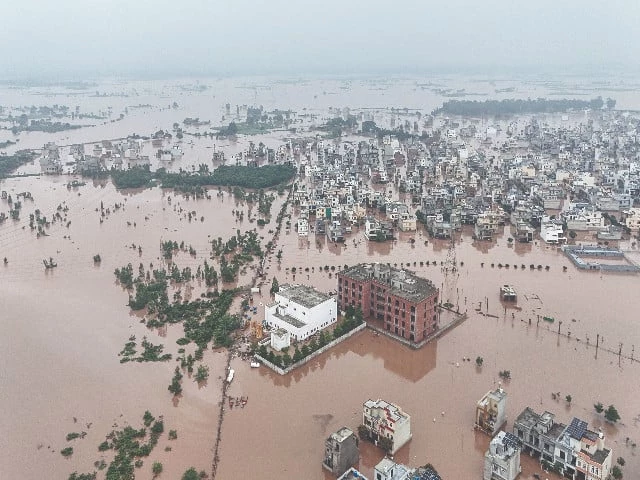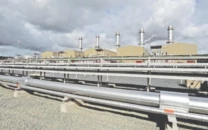Concrete jungle drains Lahore's aquifers
Rapid urbanization blocks rain recharge as groundwater plunges 1-4 feet annually

Large swathes of Lahore have been covered in concrete, preventing rainwater from naturally recharging underground aquifers, which are fast depleting.
According to the Irrigation Research Institute, instead of recharging 10-15 acre-feet of water, only 1.5 million liters were artificially recharged through recharge wells during the ongoing monsoon, while the rest drained into sewers and drains.
Dr Zakir Hussain Siyal, director general of the institute, told The Express Tribune that due to insufficient recharge, Lahore's groundwater level is falling rapidly1 to 4 feet annually in different areas.
In Gulberg, the water table dropped from 125 to 300 feet, while in other areas it has sunk to 150 feet.
Drinking water is now found as deep as 700-800 feet and even deeper in some places, with much of the upper water becoming brackish. To counter this, the department has installed 70 recharge wells but results remain inadequate.
With 1,500-1,800 tube wells operating around the clock in Lahore, groundwater extraction far outpaces recharge. Dr Siyal stressed the urgent need for artificial recharge systems, underground dams, and rainwater harvesting through greenbelts, grounds, and galleries.
"Without large-scale recharge projects across schools, colleges, universities, housing societies, and offices, the underground water level will reach dangerously low levels," he said.
Artificial recharge systems are engineered methods used to replenish underground aquifers by directing excess surface water, such as storm runoff or treated wastewater, into the soil through recharge wells, infiltration basins, or percolation tanks.
These systems enhance groundwater availability, reduce the risk of land subsidence, and help manage water resources more sustainably in areas facing depletion.
Underground dams are barriers built below the ground surface to block the natural flow of groundwater, allowing it to accumulate and create a hidden reservoir.
Rainwater harvesting, on the other hand, is the practice of collecting and storing rainwater from rooftops, paved areas, or open catchments for later use. The stored water can be used for irrigation, domestic needs, or recharging aquifers, reducing dependence on municipal supply.






















COMMENTS (4)
Comments are moderated and generally will be posted if they are on-topic and not abusive.
For more information, please see our Comments FAQ